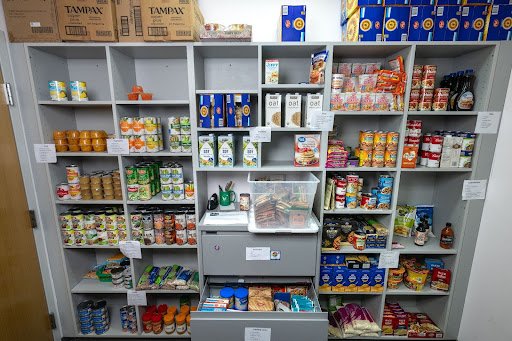Food Insecurity For Alaska's College Students
By Summer Sweet, AFPC AmeriCorps Intern
Food insecurity is a national and worldwide problem that individuals and families from all populations face. College students are one of the most commonly affected communities that struggle with consistent access to adequate food sources. Students facing a lack of basic needs items such as food, hygiene products, and cold weather clothing also commonly face financial insecurity as well as homelessness. All of these issues are major health disparities and severely affect the success of college students both academically and socially. Students seeking higher education in Alaska struggle with meeting basic needs while juggling all of the typical aspects that come along with life as well as school, work, and other commitments.
The University of Alaska Fairbanks and the University of Alaska Anchorage run food pantries on campus that allow students facing food insecurity to access food. The UAA campus serves primarily nontraditional, commuter students who commonly go to school in conjunction with supporting themselves and their families. Younger, first-year students come from all over the state as well as national and international students attending classes on campus. The poverty rate of students who primarily support themselves is around 50% and students not receiving financial aid likely face higher rates of poverty and are less likely to complete a degree due to this.
National food insecurity in college populations is around 27-67% and disproportionately affects marginalized populations. A recent unofficial survey done on the UAA campus in the Spring of 2023 supported these statistics by revealing that up to 45% of students self-report that they have experienced hunger due to lack of food in the past 30 days, 10% had insufficient access to basic needs items and 12.6% report experiencing homelessness while in college. This survey was given as a part of a basic needs pilot program initiative called the Wellness Wagon, which provides students on campus with snacks and basic needs items for free, with the idea of reducing barriers and meeting students where they are at. The UAA Seawolf Food Pantry has also found similar results with 45% of the students they serve experiencing food insecurity.
The impacts on students' physical health are also important to recognize when looking at these disparities. Because students can't provide themselves with the things they need to maintain optimal health, they likely opt for less nutritionally dense foods because those foods tend to be cheaper. Students may stretch food for as long as they can, not getting the proper serving sizes and nutritional calories required to function properly. Initiatives to fight food insecurity on the UAA campus include the aforementioned “Wellness Wagon” which started because of the apparent need for nutritional snacks and food options on campus. The wagon travels around campus to different areas where students commonly convene to study. Many students share that they have not eaten all day and are grateful to have this service as an option. The Seawolf Food Pantry allows students to visit and pick items for themselves and their family members. The UAA Emergency Food Cache provides students in need with a food bag containing three days of shelf-stable, easy-to-prepare meals. Students who utilize the pantry and cache tend to be repeat visitors and have higher risk factors for negative impacts on their academic performance and success.
The call for increased awareness of the issues in this specific population is vital to students' social determinants of health and well-being. Students who struggle with basic needs are more likely to have to decide to drop out of college to support themselves, experience isolation, and negative impacts on both physical and mental health.
Action can be taken to help solve this problem and reduce these barriers, including fundraising efforts to support the continuation of these services to students. These programs have direct ways you can support:
Policy change is another action opportunity. We need to push for federal, state, and local policies that can give students more paths to food security. If our policies show an investment in the health of students now, they can in turn show an investment in building a future for our state. College should be a time for learning and growth, having accessible and affordable food resources in fundamental to both.
As a college student myself, I am grateful for the resources these programs have provided and encourage you all to support their continued work to feed the next generation of Alaskan leaders.
Source:
Kathi R. Trawver & Travis Hedwig (2019): Food and housing insecurity and homelessness among students in an open-enrollment university, Journal of Social Distress and the Homeless, DOI: 10.1080/10530789.2020.1676987








